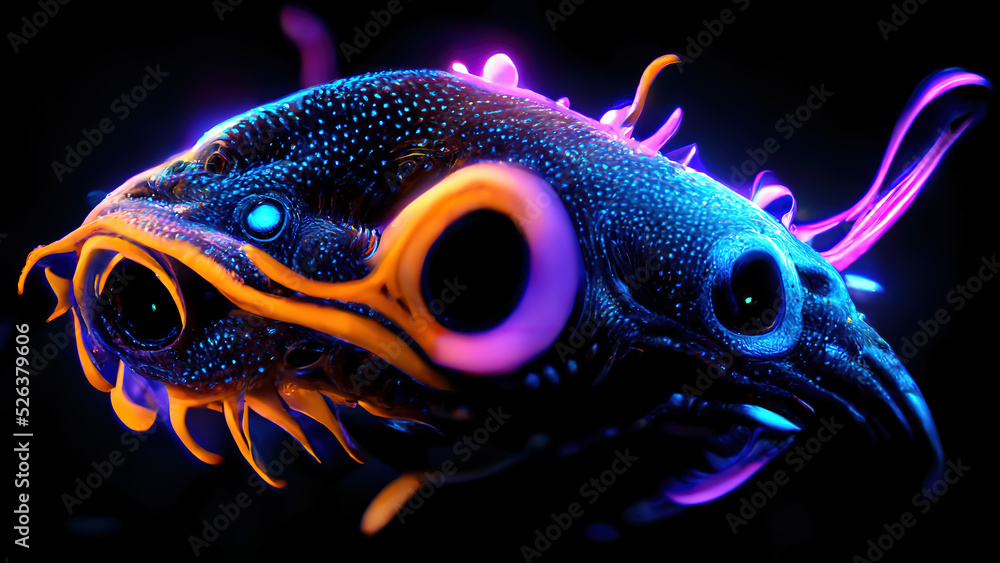The Fascinating World of Bioluminescent Animals
Bioluminescence, the ability of living organisms to produce light, is a captivating phenomenon that has intrigued humans for centuries.
This natural light production is not only visually stunning but also serves various ecological functions.
From the deep ocean to dense forests, bioluminescent animals have evolved diverse adaptations to survive and thrive in their environments.
This article explores the biology behind bioluminescence, the ecological roles it plays, and the remarkable diversity of bioluminescent species.

The Biology of Bioluminescence
Bioluminescence occurs through a biochemical reaction that produces light without significant heat, known as "cold light." This reaction involves a light-emitting molecule called luciferin and an enzyme called luciferase.
The Biochemical Process
The reaction between luciferin and oxygen, catalyzed by luciferase, results in the emission of photons, producing visible light. The color of the light can vary depending on the organism and the specific type of luciferin and luciferase involved.
In the ocean, blue and green are the most common colors due to the wavelengths traveling farthest underwater. On land, some fungi and insects produce green, yellow, or even red light.
Genetic Basis and Evolution
Bioluminescence has evolved independently in multiple lineages, a phenomenon known as convergent evolution. This means that different species have developed this trait independently, often as a response to similar environmental pressures.
The genetic basis for bioluminescence varies, with some species having symbiotic relationships with bioluminescent bacteria, while others produce the light through their own biochemical machinery.
Ecological Functions of Bioluminescence
Bioluminescence serves several ecological purposes, providing advantages for survival, communication, and reproduction.
Predation and Defense
Many bioluminescent animals use their light to attract prey or to deter predators. For example, deep-sea anglerfish use a bioluminescent lure to attract fish into their reach.
Conversely, some species produce sudden flashes of light to startle and confuse predators, allowing them to escape.
Communication and Mating
In some species, bioluminescence plays a crucial role in communication and mating rituals. Fireflies, for example, use specific light patterns to attract mates.
Each species has its unique flash pattern, which helps individuals identify and attract suitable partners.
Camouflage and Counter-Illumination
Certain animals use bioluminescence for camouflage, a technique known as counter-illumination. By emitting light that matches the brightness and color of their surroundings, these animals can become less visible to predators and prey. This adaptation is particularly useful in the deep sea, where sunlight is minimal, and bioluminescent organisms can blend into the faint light from above.
Diversity of Bioluminescent Species
Bioluminescence is found across a wide range of taxa, including bacteria, fungi, fish, insects, and even some terrestrial animals. This diversity highlights the widespread occurrence and evolutionary advantages of bioluminescence.
Marine Bioluminescence
The ocean is home to the most extensive variety of bioluminescent organisms. Deep-sea environments, where sunlight does not penetrate, have particularly high concentrations of bioluminescent species. Notable examples include:
Anglerfish
Known for their distinctive bioluminescent lures, which they use to attract prey in the dark depths of the ocean.
Dinoflagellates
Microscopic organisms that cause the phenomenon known as "sea sparkle," illuminating the waves with a blue glow.
Jellyfish
Many species, such as the comb jelly, exhibit stunning displays of light, which they use for communication and predation.
Terrestrial Bioluminescence
On land, bioluminescence is less common but still remarkable. Some well-known terrestrial bioluminescent organisms include:
Fireflies
These insects are perhaps the most famous bioluminescent land animals, known for their glowing abdomens during mating displays.
Fungi
Some mushrooms, like those in the genus Mycena, exhibit bioluminescence, often visible in the dark undergrowth of forests.
Glowworms
The larvae of certain beetles produce light to attract prey or mates.
The Significance of Bioluminescence in Science and Culture
Bioluminescence has captured human imagination for centuries, influencing art, literature, and science. Its study has led to significant scientific advancements and practical applications.
Scientific Research
Bioluminescence has been instrumental in scientific research, particularly in molecular biology and medical diagnostics. The discovery and application of the Green Fluorescent Protein (GFP) from the jellyfish Aequorea victoria have revolutionized biological imaging. GFP and its derivatives are used as markers to study gene expression, protein localization, and cellular processes.
Cultural Impact
The mesmerizing beauty of bioluminescence has inspired various cultural expressions. From folklore to contemporary literature, bioluminescent creatures often symbolize mystery and wonder.
The phenomenon is also a popular attraction in tourism, with people flocking to locations where bioluminescent organisms can be observed, such as bioluminescent bays and beaches.
Environmental and Conservation Aspects
The study of bioluminescent organisms also has implications for environmental monitoring and conservation. Changes in the abundance and distribution of bioluminescent species can indicate shifts in ecosystem health, particularly in marine environments. Conservation efforts are crucial to protect these unique organisms and their habitats, which are often threatened by pollution, climate change, and human activities.
Conclusion
The world of bioluminescent animals is as fascinating as it is diverse. From the deep-sea mysteries of anglerfish to the enchanting glow of fireflies, these organisms illuminate not only the darkness of their habitats but also our understanding of life and nature.
As we continue to explore and study these remarkable creatures, we uncover more about their biology, ecological roles, and the potential benefits they offer to science and humanity.
Sources
- National Geographic: Bioluminescence
- Harvard University: The Evolution of Bioluminescence
- Nature: The Genetics of Bioluminescence
- Fungal Diversity: Bioluminescent Fungi















![[LIVE] Engage2Earn: Save our PBS from Trump](https://cdn.bulbapp.io/frontend/images/c23a1a05-c831-4c66-a1d1-96b700ef0450/1)


























![[ℕ𝕖𝕧𝕖𝕣] 𝕊𝕖𝕝𝕝 𝕐𝕠𝕦𝕣 𝔹𝕚𝕥𝕔𝕠𝕚𝕟 - And Now What.... Pray To The God Of Hopium?](https://cdn.bulbapp.io/frontend/images/79e7827b-c644-4853-b048-a9601a8a8da7/1)












